Unexpected Art in Unexpected Places
What happens when we look more closely, whether with the naked eye or equipment? Incredible details come into focus, bringing with them the possibility of beauty and interest we might never have conceived of. That's what some scientists and artists have discovered. As a result, a certain kind of artwork has been emerging because of technological advances and a discerning eye. In a winning combination of science and art, what is observed microscopically can be magnified into large images that defy a viewer's guess as to what they might be. To me, they register as abstract paintings or textile designs. In fact, there are artists using such images to create their own work in these mediums.
While the subjects have been aspects of nature, for the most part, imagine what would occur if you suddenly zoomed in on all those things you have lying around your house and studio or rusting outside. What new art might be inspired by such "stuff"? What if you zeroed in on the carcass of a long-ago abandoned car or the mildewed pattern on a wall you pass by every day? How might these tiny designs fuel your creativity in a big way?
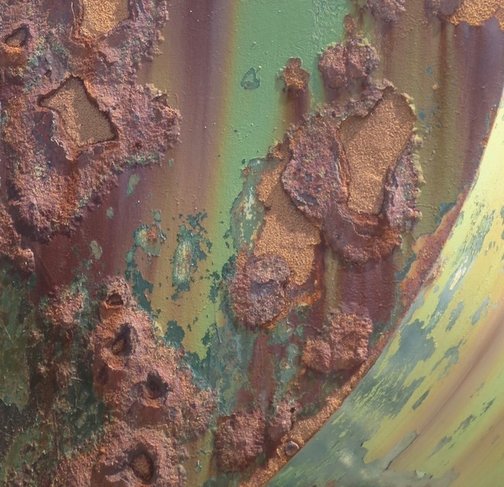
Detail of rusting fuel storage tank. West Coast, Ireland.
I had an experience of this just the other day when I was up the coast in Mendocino County. I stopped in to see an exhibit at Partners Gallery in Ft. Bragg, California, and when I walked back to my car, I suddenly noticed something. I took full-frame and close-up images. Can you guess what the first two details are? Abstract watercolors? Coffee- or wine-stained paper?
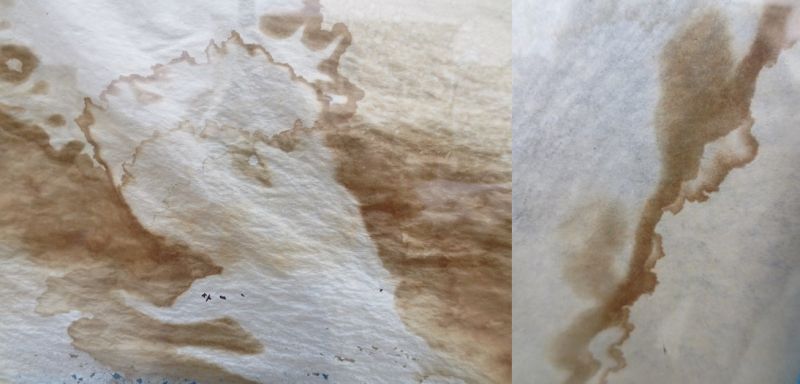
Now look at the complete images. Are they artwork in a gallery's windows? It turns out that paper was taped to the front windows of an empty storefront. Because of condensation on the glass, the paper developed an unexpected pattern as though an artist had created watercolors that look like maps. Unlike the artists' images that follow, there's nothing technical about these impressions, but I offer them as an incentive to not hurry past and discount what seems to be nothing at first glance.
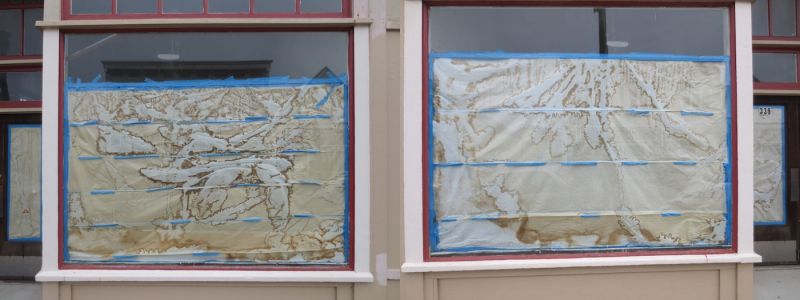
Fernán Federici is a renowned molecular geneticist and award-winning microscopist who takes stunning photographs of plants at the cellular level. It all started more than five years ago, when he was a Ph.D. student in biological sciences at Cambridge University. While working with microscopes and fluorescence microscopy, he found himself staring at spectacular colors and patterns. He got permission from his adviser to post images on his Flickr site. Here are a few of his plant art. Would you have known what they depict?
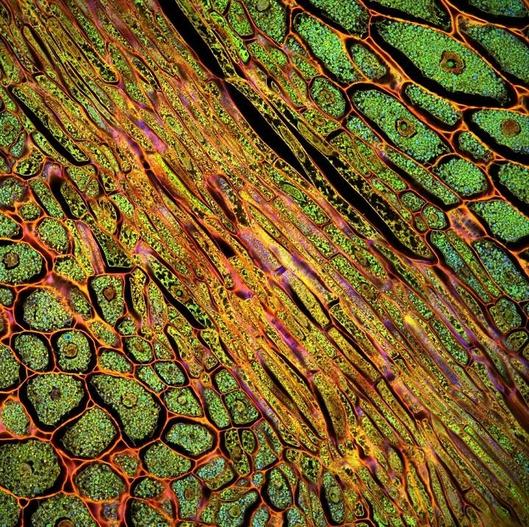
El Choclo ("corn cob"), by Fernan Federici.
Source: http://www.featherofme.com/fernan-federici-microscopic-photographs-of-plants/
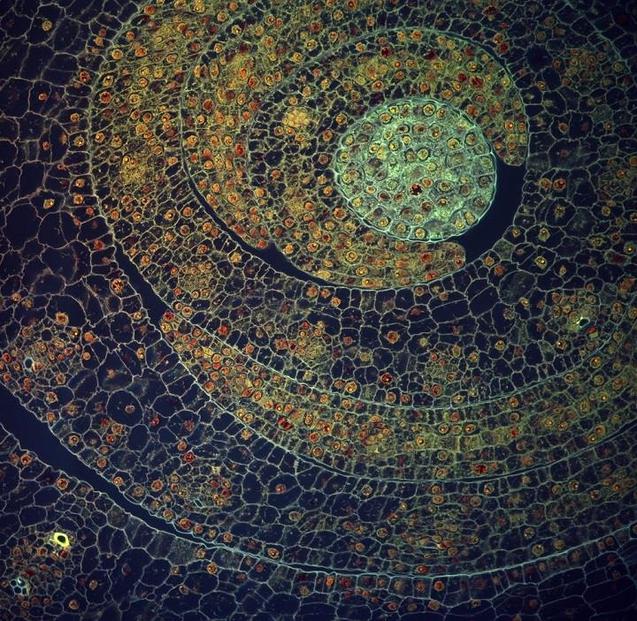
Plant art by Fernan Federici. Source: http://www.featherofme.com/fernan-federici-microscopic-photographs-of-plants/
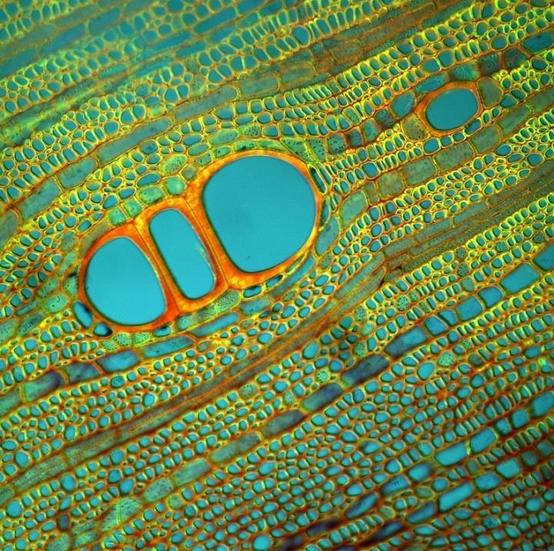
Diospyrus Lotus, by Fernan Federici.
Source: http://www.featherofme.com/fernan-federici-microscopic-photographs-of-plants/
And then there's the incredible photography of crystals by Lee Hendrickson. If asked, I would have said the first image is of feathers, but it's not. The second could be a kind of grass, but it's not. The third has to be a watercolor, but it's not. And the fourth reminds me of a mountainside on an old Chinese scroll, but it's not. Try guessing and then check out the captions for big surprises.
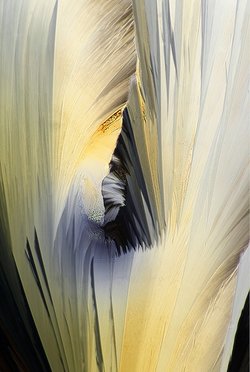
"Mystique," crystalline acetaminophen, by Lee Hendrickson.
Source: http://www.photographyofcrystals.com/
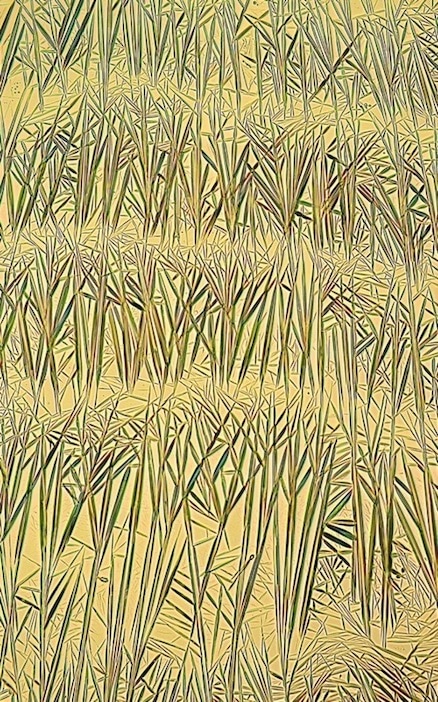
"Caffeine 4 p.m.," crystalline caffeine, by Lee Hendrickson.
Source: http://www.photographyofcrystals.com/
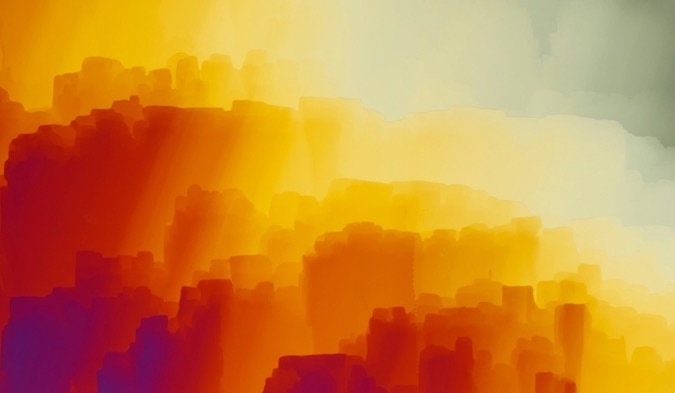
"The Palisade," crystalline phenylethylamine found in chocolate, by Lee Hendrickson.
Source: http://www.photographyofcrystals.com/
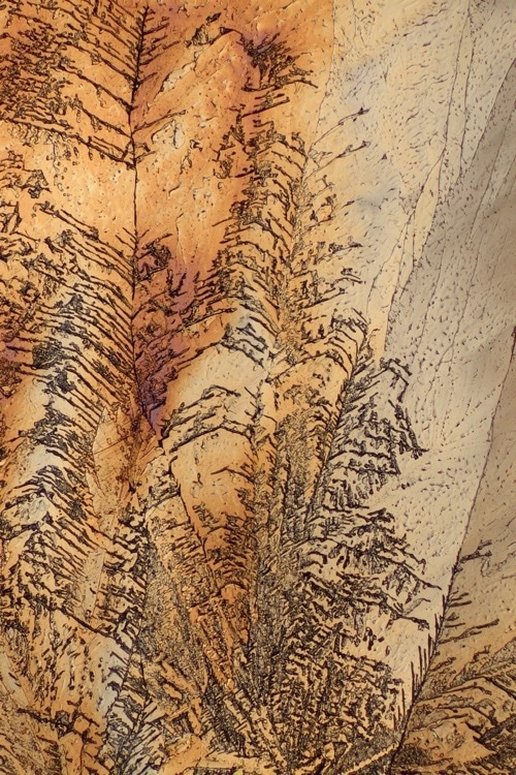
"Impression," crystalline Truvia, a non-caloric sweetner from Stevia plant, by Lee Hendrickson.
Source: http://www.photographyofcrystals.com/
There are, of course, many more images as well as a mathematically calculated art of fractals, but that's for another post. There have also been exhibits around the country (and perhaps internationally) on this growing relationship between science and art. Betty Busbyis a prolific fiber artist whose work exemplifies that relationship. She renders microscopic images highly magnified in various kinds of textiles, using a range of surface design techniques.
[For an earlier post on science and art: exploringtheheartofit.weebly.com/blog/mutual-inspiration-science-and-art]
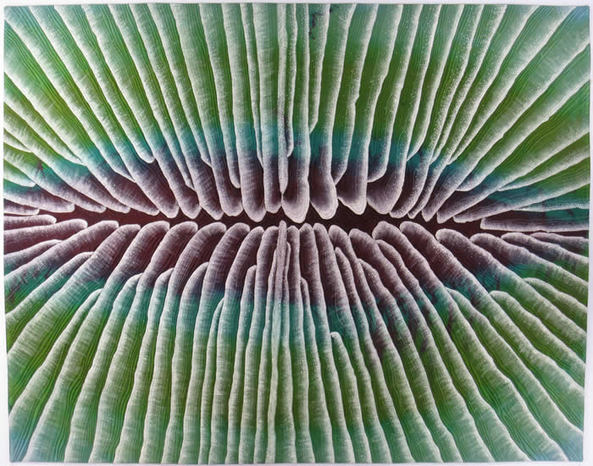
"Fungia," by Betty Busby. Source: http://www.bbusbyarts.com/
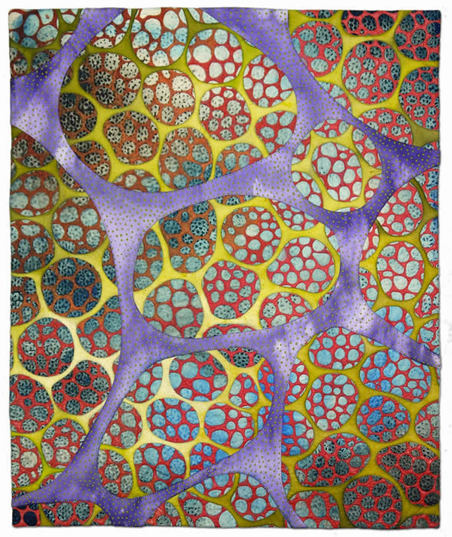
"Intercellular," by Betty Busby. Source: http://www.bbusbyarts.com/
Clearly, for some artists, science has become a great source of artistic inspiration. And, for some scientists, art is what their research can turn into. Then there are those artists who never used technology to achieve similar results. Take American painter Georgia O'Keeffe (1887-1986), renowned for her large flowers. She explained how she came to create them:
It was in the 1920s, when nobody had time to reflect, that I saw a still-life painting with a flower that was perfectly exquisite, but so small you really could not appreciate it. … I decided that if I could paint that flower in a huge scale, you could not ignore its beauty.
O'Keeffe's words strike me as the best reason for enlarging the tiniest nuances. It's what enables us to see and appreciate the fantastic art that is Nature itself.
Syndicated from Exploring the HeART of it. Mirka Knaster is a textile artist with a decades-long career as a writer. Working with textiles from around the world and exploring the heart of art evoke her enthusiasm and joy daily.


On Jun 2, 2020 Shivani Rao wrote:
Very interesting! I came across another article about artworks in strange locations - https://bit.ly/3gS5rxM
Thought others would find it useful.
Post Your Reply